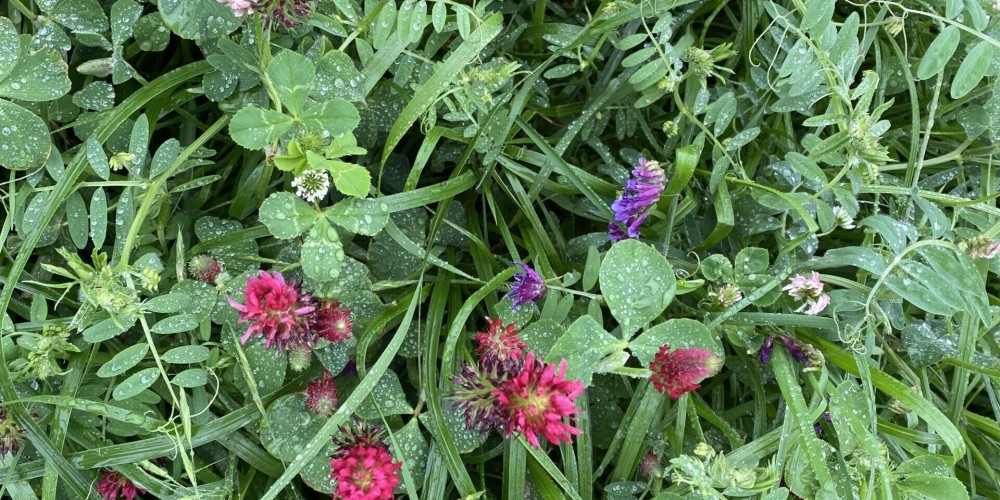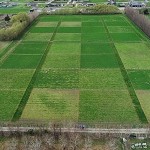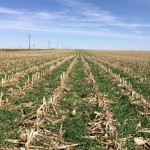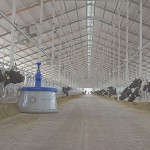Regenerative Agriculture Research in Full Swing
Added 3 weeks ago

Two years into New Zealand’s most comprehensive study on regenerative pastoral practices, results have been mixed.
Whenua Haumanu, a collaboration between Massey University and the Ministry for Primary Industries through the Sustainable Food and Fibre Futures fund, is a seven-year research project involving universities, Crown Research Institutes, and industry partners. It assesses the relevance of regenerative agriculture in New Zealand and connects with studies in Australia, Ireland, and South America.
With a broad scope, the research is industry-led to focus on key farmer concerns. “We won’t be able to answer everything, but the goal is to engage robustly throughout the project to guide its direction. Farmers, who will implement these practices, need to drive it,” said Professor Danny Donaghy, the programme and research lead.
A surprising finding so far is that nitrous oxide emissions were halved on diverse pastures compared to standard pastures, regardless of management. Further measurements will be taken this year. “This may be due to differences in root activity, growth patterns, and nitrogen efficiency. We’re eager to see what this year’s results reveal,” Donaghy noted.
This remains a key focus area to understand the impact of regenerative practices on greenhouse gas emissions. Scientists acknowledge that many of New Zealand’s pastoral topsoils are saturated with carbon. Regenerative agriculture aims to build soil carbon, but the question is how much more can be stored and what benefits it might bring.
“Soil carbon is typically measured at a depth of 30cm, but if we can consistently grow roots deeper through pasture species selection and management, could we store more carbon below that level? That’s what we’re investigating,” Donaghy explained.
In trials on dairy and sheep farms, initial plantings included 18 species on dairy pastures and 19 on sheep pastures. Over time, these reduced to eight to ten species, with four dominating at any one time. Dominant species included ryegrass, white clover, cocksfoot, red clover, and plantain—reflecting extensive breeding and selection efforts.
Rather than focusing on the number of species, the research emphasizes functional diversity—choosing plants based on their role. “For example, we needed resilience to summer dry conditions but didn’t want to create a winter feed gap by using only summer-active species,” Donaghy said. Legumes were included to reduce nitrogen fertilizer use, while plantain was selected for mitigating nitrogen losses.
Findings show that pasture yield benefits plateau at four to eight species, while animal production benefits peak at three to four species. “Each species must be present in sufficient numbers to fulfill its intended role, and management practices must support them to avoid unnecessary costs,” he added.
Soil health is another research focus. DNA analysis revealed over 1,400 bacterial species in the Massey dairy farm’s soil, compared to several hundred in sheep pastures, likely due to differences in soil drainage. Establishing baseline levels is crucial for evaluating soil health changes.
Hot water extractable carbon, a measure of soil microbial biomass, was higher in diverse pastures on the dairy farm. “Regenerative treatments involve longer pasture rest periods, reduced nitrogen fertilizer use, and soil additives like fish products to stimulate microbial activity,” Donaghy said. Earthworm populations increased in Year 1 but declined in Year 2, highlighting the need for long-term data collection.
A key question remains: should pastures be more fungally dominant, as some regenerative farmers aim for, or are they naturally bacterial-dominant? “Efforts to shift microbial communities may not be necessary or effective. We will explore this further,” Donaghy noted.
Pasture quality differences have been minimal so far, but changes are expected as dominant species shift. Early findings show higher lamb growth on diverse pastures, likely due to increased legume and herb content. Research also indicates potential variations in meat and milk quality based on amino acid profiles.
As the project progresses, research will narrow its focus based on farmer priorities. Key areas include refining measurements of fungal and bacterial communities, targeting RNA analysis, and exploring free-living nitrogen-fixing bacteria to enhance natural nitrogen availability.
Further investigations will assess how fungi help plant roots access water and nutrients, potentially improving drought tolerance. Animal welfare studies will also expand, utilizing boluses to track temperature, water intake, and pH, along with collars to monitor movement and rumination.
“We’re examining soil health, pasture performance, and animal outcomes while incorporating farmer feedback. This ensures the research has practical value and doesn’t just end up as another report gathering dust,” Donaghy concluded.
Join the conversation
Be the first to leave a comment.
Leave a comment
All comments are reviewed before they are published on the website. Your email address will not be published.

Innovative Approaches to Sustainable Farming: Integrating Soil Science, Pasture Management, and Dairy Research





